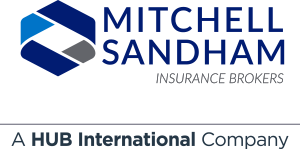Canadian Class Action Securities Claims
This may surprise a lot of Canadian directors and officers. NERA Economic Consulting recent published its “Trends in Canadian Securities Class Action: 2010 Update”, here, co-authored by Mark L. Berenblut, Bradley A. Heys, and Tara K. Singh. They suggest there are 28 active lawsuits, alleging almost $16 billion in damages. Eight new filings in 2010 was one less than 2009 and two less that 2008. The study notes that five cases were settled in 2010 at average and media settlement amounts of $13.5 million and $10 million, respectively, with total settlement by defendants of almost $68 million. The majority of these cases were brought under the secondary market liability legislation, Bill 198.
The study also raises the important issues of claims brought against Canadian domiciled companies in the US. They noted 13 such filing, but, surprisingly, only 3 of these have parallel actions in Canada.
The Canadian D&O insurance landscape will obviously be affected by these cases. The numbers may pale in comparison to the US, but our spread of risk and total incoming D&O premium is also much smaller than the US. My very rough guess on total D&O insurance premium generated in Canada in 2010 is $250 million. This is not just publicly traded D&O premium, but all public, private, pseudo Government and non-profit D&O premium. If five settlements, based on relatively new and untested law, can take this big a chunk of the premium, and the vast majority are still pending, then D&O premiums will be going up. Remember, after distribution costs (our commissions), claims costs, underwriting expenses, reinsurance, corporate overhead, etc. etc., the combined loss and expense ratio starts going up quickly. Then you have to think about the lawsuits that do not fit into that very specific category of “certified securities class actions.” These are derivative claims, employment and pension/fiduciary suits (remember, D&O policies are often, and unfortunately, extended to Employment Practices Liability and fiduciary liability risk), competitor actions, regulator investigations, client claims, etc.
But all this fear mongering aside, the sky is not falling. The are many competitors in the Canadian D&O marketplace (27 last time I looked, but far fewer for Public Listing Exposure), and renewal premiums seem to be flat in many industries and even falling in the small private and non-profit space. The key will be to watch for capacity leaving the Canadian D&O marketplace. We had one Managing General Agent (not a standalone, Canadian capitalized insurance company, but an entity underwriting on behalf of Canadian insurance or reinsurance companies or Lloyd’s of London Syndicates) closed its D&O doors last week; but, since its renewal rights were purchased by a relatively new player in this line of business in Canada, it does not suggest that capacity is being squeezed.
And the great thing about public cases, you can read about the alleged wrongful acts and strengthen your loss control tools to mitigate risk.
One of the ways to mitigate risk is to purchase a GOOD, I repeat, GOOD, D&O insurance policy. Broad is not always better. For example, extending the D&O policy to cover loss of the corporate entity can be classified as broad, and even good, but that does not mean it will serve the best interests of the individual, independent directors, non-independent directors, or the corporate officers. Management needs to engage the services of an experienced, truly independent, insurance broker who is dedicated to the client and to the insurance products. They need to discuss and investigate the broker’s potential conflicts of interest, and be satisfied that the individual (not just the firm) who is responsible for knowing the insured, and its operations, is also the person negotiating and servicing the coverage.
Far too many Canadian insurance brokers are willing to call themselves independent, even when they are owned by an insurance company or insurance related financial conglomerate.
A D&O policy is not good unless the priorities of each of the Insureds have been identified and applied to the coverage purchased.
If you would like more information on Directors’ and Officers’ Liability Insurance, or Canadian D&O litigation, please contact me, Greg Shields, Partner, Mitchell Sandham Insurance Service,gshields@mitchellsandham.com, or at 416 862-5626.
CAUTION: The information contained in the Mitchell Sandham website or blog does not constitute a legal opinion or insurance advice and must not be construed as such. It is important to always consult a registered and truly independent insurance broker and a lawyer who is a member of the Bar or Law Society of the relevant jurisdiction with regard to this material before making any insurance or legal decisions. All material is copyrighted by Mitchell Sandham Inc. and may not be reproduced in any form for commercial purposes without the express written consent of Mitchell Sandham Inc. Anyone seeking to link this site from any external website must receive the consent of Mitchell Sandham Inc. by sending an e-mail to gshields@mitchellsandham.com.


